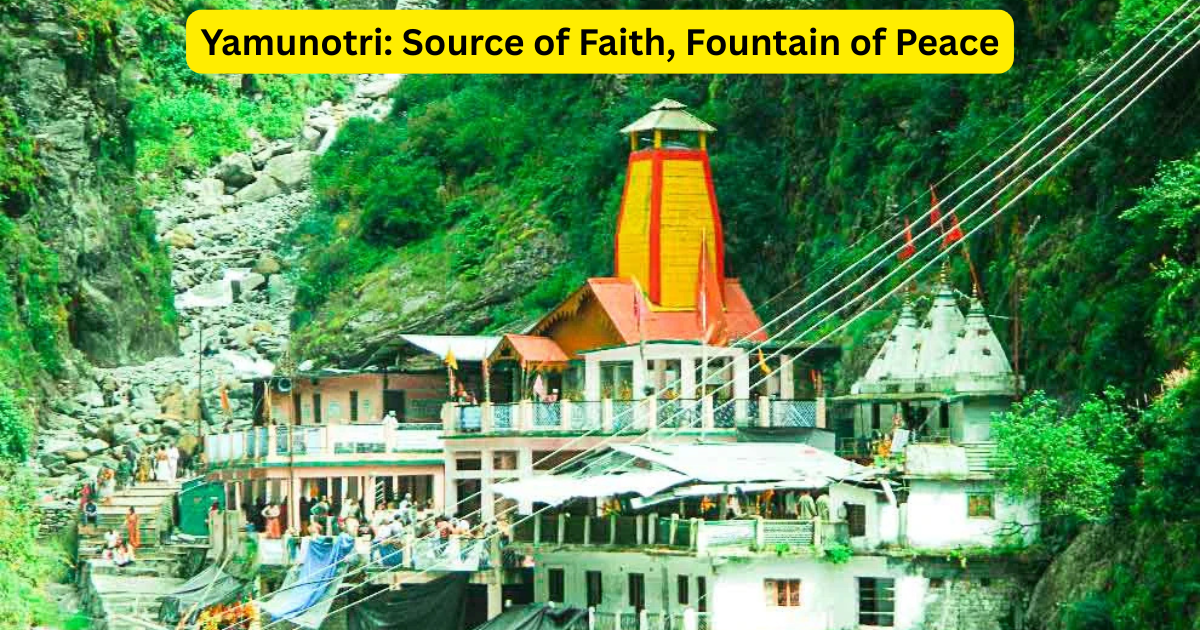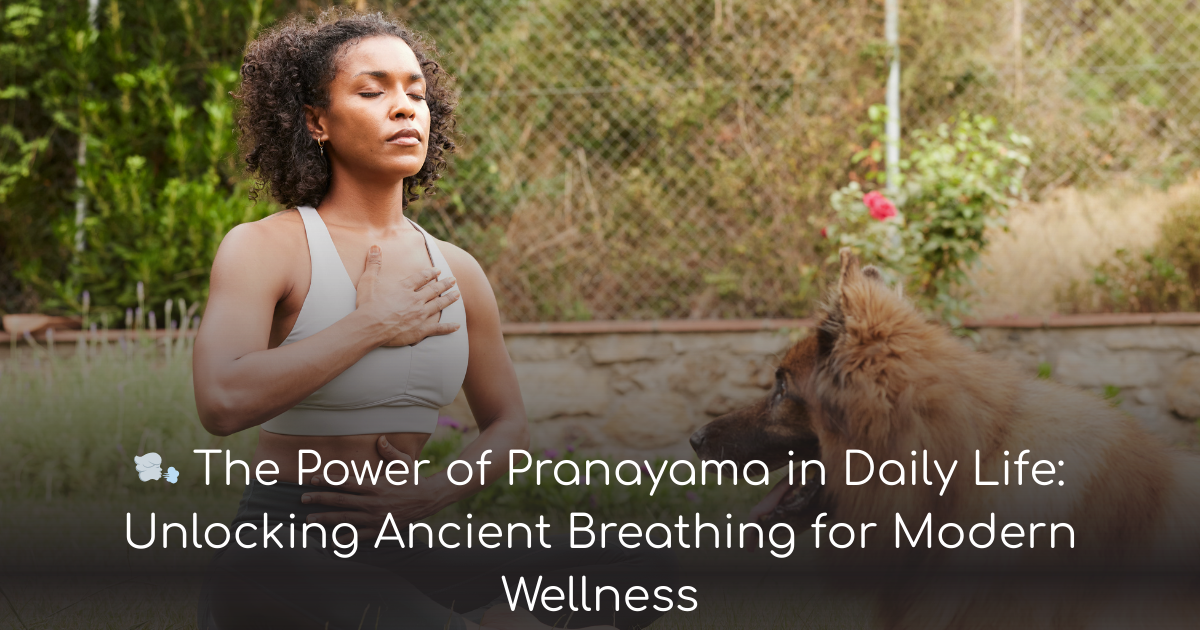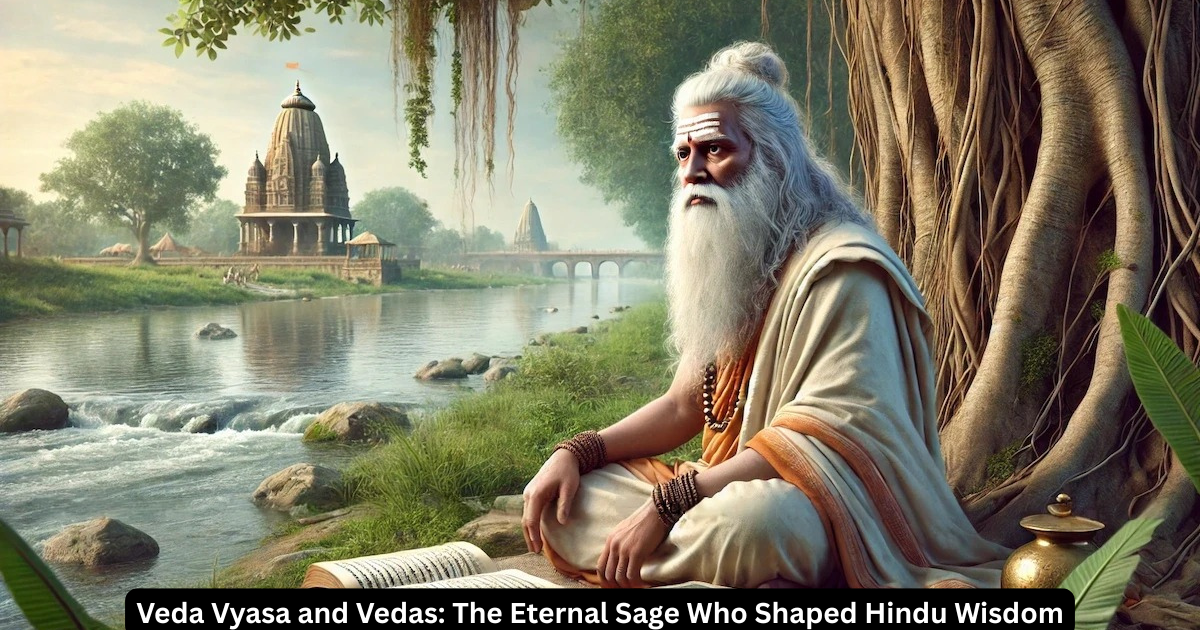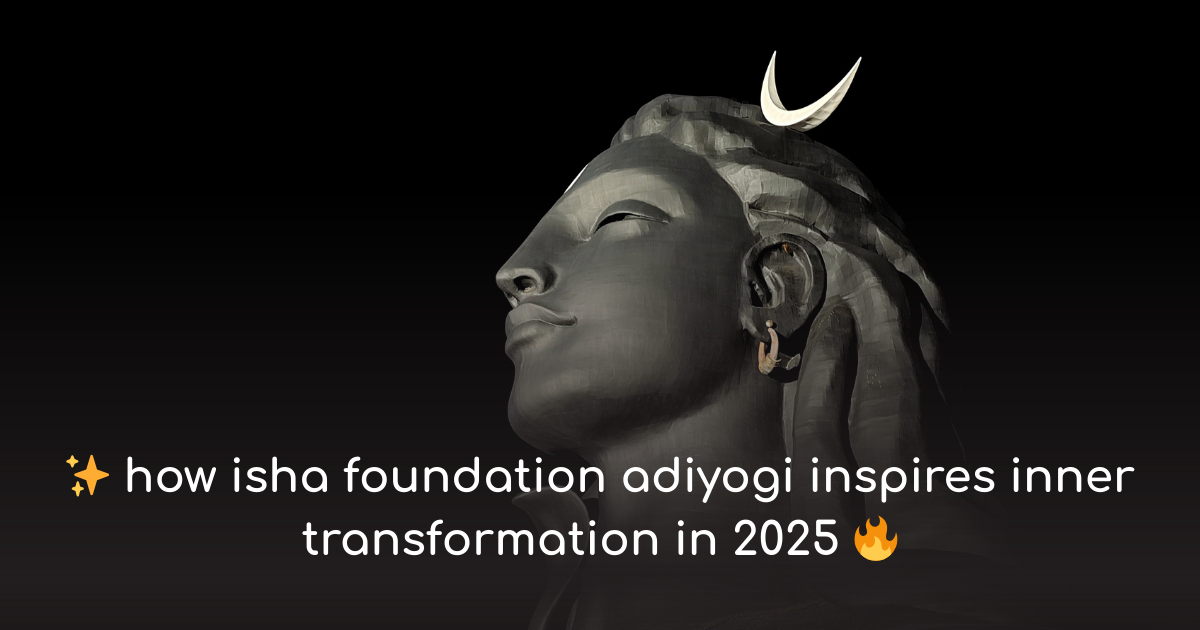7 powerful reasons to visit badrinath temple in 2025
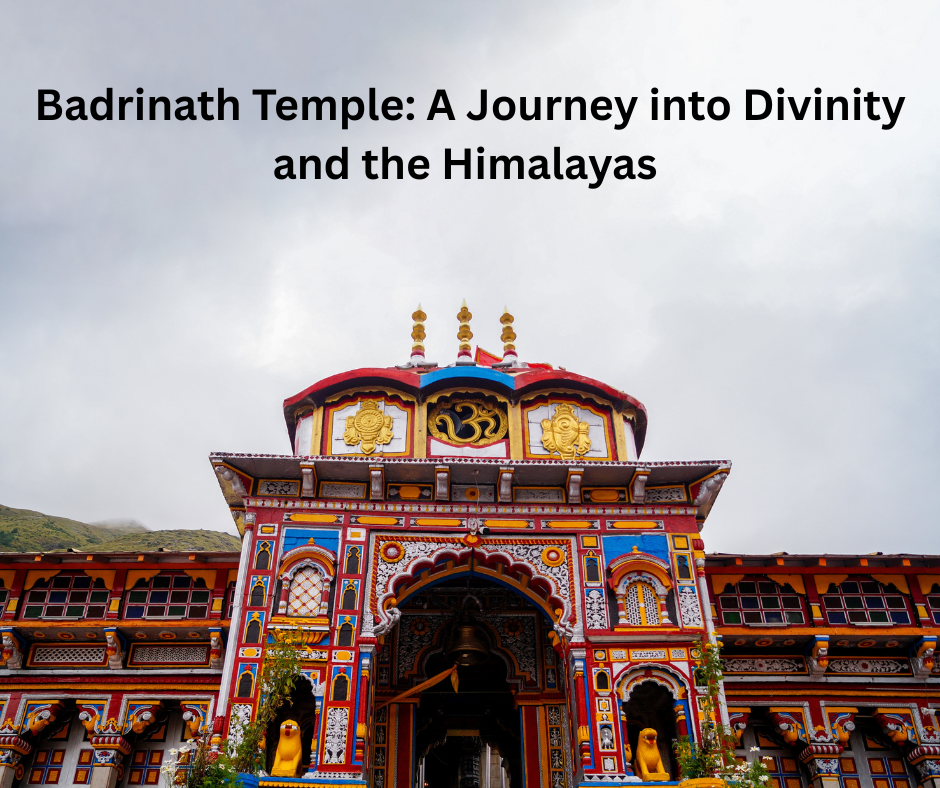
Explore 7 powerful reasons to visit Badrinath Temple in 2025. Discover its divine energy, myths, festivals & spiritual journey in this ultimate guide.
7 Sacred Facts About Badrinath Temple Every Devotee Should Know
Badrinath Temple, one of the holiest shrines in India, stands tall in the majestic Himalayas as a beacon of spirituality and divine energy. For centuries, millions of devotees have braved the cold, rugged terrain of Uttarakhand to experience the blissful darshan of Lord Vishnu in his Badri form. Whether you are a devout pilgrim or a spiritual seeker, a visit to Badrinath Temple is not just a journey—it’s a transformation of the soul.
In this article, we’ll take a deep dive into the sacred aura of Badrinath Temple, exploring its rich history, mythological importance, pilgrimage routes, travel tips, and everything you need to know to prepare for a spiritually fulfilling journey. If you’re planning a Char Dham Yatra or curious about ancient Vishnu temples, this comprehensive guide will enrich your understanding and devotion.
Let’s begin our sacred exploration of Badrinath Temple, a place where heaven meets earth and faith meets fulfillment.
The Significance of Badrinath Dham
Badrinath Dham is one of the four ancient pilgrimage sites collectively known as the Char Dham Yatra, which also includes Kedarnath, Gangotri, and Yamunotri. Among these, Badrinath holds a unique position as it is dedicated to Lord Vishnu, the preserver of the universe.
Nestled at an altitude of 10,279 feet above sea level, Badrinath Dham is flanked by the Nar and Narayan mountain ranges and graced by the river Alaknanda. It is believed that Lord Vishnu meditated here for ages, seeking penance for the worldly luxuries he enjoyed during his various avatars. To protect him from the harsh climate, Goddess Lakshmi took the form of a Badri tree, which is how the place got its name—Badri-Nath or the Lord of Badri.
For pilgrims, a visit to Badrinath is more than just a ritual; it is a path to Moksha—freedom from the cycle of life and death.
Badrinath Temple and the Char Dham Yatra
No Char Dham Yatra is complete without darshan at Badrinath Temple. In fact, many pilgrims choose to end their journey here, as it signifies spiritual completeness. The temple is considered the northernmost Dham, while the others lie in the south, east, and west directions of the Indian subcontinent.
According to tradition, Adi Shankaracharya rediscovered the deity of Badrinath in the Alaknanda River and reinstated it in the temple, thereby reviving the spiritual essence of this ancient site. Since then, the temple has attracted saints, sages, and devotees from every corner of the country.
It is also a part of the Chota Char Dham of Uttarakhand and holds special reverence during the Badri-Kedar Festival, when thousands gather to worship both Vishnu at Badrinath and Shiva at Kedarnath.
Historical Legacy of Badrinath Temple
The history of Badrinath Temple is deeply rooted in ancient Hindu texts and mythology. It is said that the Pandavas visited Badrinath during their final journey toward heaven, known as Mahaprasthana. The temple finds mention in the Vishnu Purana, Skanda Purana, and even in various epics like the Mahabharata.
The present-day structure of the temple was built in the 8th century by Adi Shankaracharya, but it has undergone several renovations due to damage from natural calamities. Despite its turbulent past, the temple stands tall as a spiritual citadel, attracting millions every year.
Within the sanctum sanctorum lies the idol of Lord Badrinarayan, seated in a meditative pose, made of black Shaligram stone—a form believed to embody Vishnu himself.
Architecture and Structure
When you first see the Badrinath Temple, its vibrant colors and intricate carvings immediately captivate you. The architecture is a blend of traditional North Indian design with Buddhist influences, given its proximity to Tibet.
The main entrance, known as Singhdwar, leads to a pillared hall or Sabha Mandap, which then leads into the Garbha Griha, where the idol resides. The entire temple complex is beautifully set against the backdrop of snow-covered peaks and echoing river chants, making the atmosphere divinely surreal.
The idol of Lord Vishnu, seated in padmasana (lotus pose), is flanked by idols of Nar and Narayan, Kubera, Garuda, and Uddhava—each carrying immense mythological and spiritual significance.
Timings and Temple Rituals
Understanding the Badrinath Temple timings is essential for any pilgrim planning a visit. The temple remains open from April/May to October/November, depending on the Hindu calendar and climatic conditions. During these months, it operates from 4:30 AM to 9:00 PM, with a midday break.
Some of the most important rituals include:
-
Abhishek Puja: Early morning bath and worship of the idol.
-
Alankar Puja: Decoration of the deity.
-
Aarti: Morning and evening prayer ceremonies that leave devotees mesmerized.
-
Shayan Aarti: Final prayer before the deity is put to rest for the night.
Each of these rituals is conducted with Vedic precision, and witnessing them feels like a spiritual rebirth.
Planning Your Badrinath Pilgrimage
A visit to Badrinath Temple requires more than just booking tickets—it needs mental, physical, and spiritual preparation. The road journey to Badrinath is both scenic and challenging, involving winding mountain paths, waterfalls, and valleys.
Here are key things to remember:
-
Travel Options: Buses and taxis operate from Rishikesh, Haridwar, and Dehradun. Helicopter services are also available from Dehradun to Joshimath.
-
Accommodation: GMVN guest houses, dharamshalas, and private lodges are available, but it’s wise to book in advance.
-
Medical Needs: Carry a personal medical kit, especially for high altitude or cold-related issues.
Ensure you’re physically fit for the trip, especially if traveling with elders or children.
How to Reach Badrinath
Located in the Chamoli district of Uttarakhand, Badrinath is accessible via road and partially by air:
-
By Air: Nearest airport is Jolly Grant Airport in Dehradun (314 km).
-
By Rail: Closest railway station is Rishikesh (295 km).
-
By Road: Regular buses and taxis are available from Haridwar, Rishikesh, and Joshimath.
From Joshimath, it’s a 44 km uphill drive to Badrinath, filled with mesmerizing views of the Himalayas.
Badrinath Weather – What to Expect
The weather in Badrinath plays a crucial role in your pilgrimage planning:
-
Summer (May–June): Pleasant and ideal for travel. Day temperatures average 10–18°C.
-
Monsoon (July–August): Heavy rainfall, prone to landslides. Avoid visiting during this time.
-
Autumn (Sept–Oct): Crisp and cool weather, perfect for peaceful darshan.
-
Winter (Nov–April): The temple closes, and the idol is moved to Joshimath due to snow.
Dress in layers, carry woolens, raincoats, and sturdy trekking shoes no matter the season.
Let’s continue the rest of the sacred facts and the action plan in Part 2 – you don’t want to miss it!
Part 2: Badrinath Temple – A Journey to Divinity and Beyond
In Part 1, we explored the historical, spiritual, and architectural magnificence of Badrinath Temple, a sacred pilgrimage site for Hindus around the globe. Now, in Part 2, let’s delve deeper into the mystical traditions, cultural festivities, nearby places, spiritual practices, and everything else you need to complete your spiritual journey.
Festivals Celebrated at Badrinath Temple
Badrinath Temple isn’t just a place of worship—it is the heart of many Hindu festivals celebrated with divine energy and spiritual joy. These festivals bring the temple to life and attract thousands of devotees.
Major Festivals at Badrinath
Badri-Kedar Utsav
This joint festival celebrates Lord Vishnu (Badrinath) and Lord Shiva (Kedarnath) through a series of classical music and dance performances by local and national artists. It’s an exquisite blend of devotion and culture.
Mata Murti Ka Mela
Dedicated to the Mother of Lord Badrinath, this festival is held annually and involves religious rituals performed on the banks of the Alaknanda River. Pilgrims believe attending the fair helps them cleanse sins and gain blessings from the goddess.
Other Celebrations
-
Deepawali: The temple is illuminated beautifully before it closes for winter.
-
Vijayadashami: Considered an auspicious time to start the yatra.
-
Opening and Closing Ceremonies: These grand occasions mark the start and end of the temple’s annual operational period.
Nearby Places to Visit Around Badrinath
The journey to Badrinath Temple doesn’t end at darshan. The surrounding region is filled with sacred spots and scenic wonders that enhance your spiritual and visual experience.
Spiritual Sites Near Badrinath
Tapt Kund
Located just below the temple, this natural hot water spring is believed to have medicinal properties. Pilgrims take a holy dip before entering the temple, considering it a physical and spiritual purification.
Brahma Kapal
A sacred ghat on the banks of the Alaknanda where shraddha rituals for ancestors are performed. It’s believed that performing these rites here ensures liberation of ancestors' souls.
Charan Paduka
A boulder bearing the footprints of Lord Vishnu, located about 3 km uphill. The climb is steep, but the view and sanctity make it worth the effort.
Other Attractions
-
Narad Kund: Sacred pond where Adi Shankaracharya found the deity.
-
Mana Village: The last Indian village before the Tibet border.
-
Vasudhara Falls: A pristine waterfall 5 km from Mana, believed to wash away sins.
Spiritual Significance and Beliefs
Visiting Badrinath Temple is not just about observing rituals—it’s about undergoing a deep internal transformation. The temple is a place where:
-
Devotees seek Moksha (liberation).
-
Sadhus and sages meditate in serene caves.
-
People offer tarpan for ancestors at Brahma Kapal.
The location itself—between Nar and Narayan mountains—is believed to represent the balance between karma and dharma. Standing before Lord Badri Vishal, many experience tears of surrender and spiritual upliftment.
Dos and Don’ts for Pilgrims
To ensure a respectful and safe pilgrimage, here are some spiritual and practical guidelines for visiting Badrinath Temple:
Dos
-
Do carry ID proof, warm clothes, and personal medicines.
-
Take a dip in Tapt Kund before entering the temple.
-
Respect the customs and maintain silence during rituals.
-
Donate to the temple or for Anna Daan if possible.
Don’ts
-
Don’t click photos inside the temple.
-
Avoid plastic or littering in and around the temple premises.
-
Don’t try to skip queues—respect the devotion of others.
-
Avoid traveling in monsoon due to landslide risks.
Badrinath Temple in Scriptures and Mythology
The temple’s divine aura is validated by its mention in ancient scriptures:
Mythological Importance
-
Vishnu Purana mentions Lord Vishnu’s meditation at Badri.
-
In the Mahabharata, Pandavas are believed to have visited Badrinath on their way to Swargarohini.
-
Adi Shankaracharya’s revival of the temple marks a major reform in Hindu pilgrimage traditions.
This mythological depth makes Badrinath Temple not just a place to visit, but a sacred story to experience.
10 Most Asked FAQs About Badrinath Temple
1. When does Badrinath Temple open and close each year?
It typically opens in April/May and closes in October/November. Dates are based on the Hindu calendar.
2. Who is the presiding deity of Badrinath Temple?
Lord Vishnu in his Badri Narayan form.
3. Can I visit Badrinath with children and elders?
Yes, but ensure they are medically fit due to high altitude.
4. Is prior booking needed for darshan?
Not mandatory, but VIP darshan and pujas can be pre-booked online or at the temple office.
5. Are there any nearby airports or stations?
Yes. Nearest airport is Dehradun (314 km) and nearest railhead is Rishikesh (295 km).
6. What is the dress code inside the temple?
Modest traditional attire is preferred; avoid shorts and sleeveless tops.
7. Can non-Hindus visit Badrinath Temple?
Yes, they are welcome to visit and observe the rituals with respect.
8. Is photography allowed?
Photography is allowed outside the temple but strictly prohibited inside.
9. What’s the best time to visit Badrinath Temple?
May–June and September–October are ideal for pleasant weather and smooth travel.
10. Are food and lodging facilities easily available?
Yes, from basic dharamshalas to deluxe hotels, options are available. Local food is simple and sattvic.
Reader's Message & CTA
🙏 Dear Reader,
If you’ve read this far, your heart is surely aligned with the spiritual vibration of Badrinath Temple. Whether you are planning your first Char Dham Yatra or revisiting this divine place, may Lord Vishnu bless your path with wisdom, peace, and moksha. Let this journey not only elevate your external experience but also inspire a transformation within.
If this article helped you, please share it with fellow devotees, bookmark it, or leave a comment with your experience or questions. Let’s keep the flame of Sanatan Dharma glowing! 🌺




